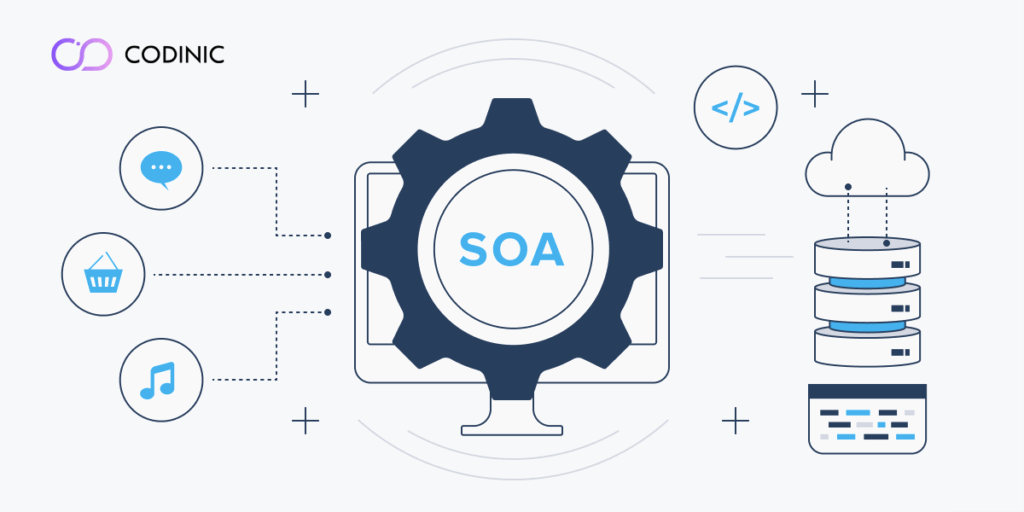SOA Nedir? Hizmet Odaklı Mimariyi Detaylıca Anlama
SOA (Service Oriented Architecture) is an architectural approach used by businesses in the modern software development world to make their technology infrastructure more flexible, scalable and efficient. In today’s rapidly changing business world, companies need to bring different systems together and optimize their processes. This is where SOA comes into play! Service-oriented architecture is like an “orchestra conductor” that makes different software components work in harmony with each other. If you want to take business processes to the next level with technology, this guide is for you!

What is Service Oriented Architecture?
Service Oriented Architecture is an approach that designs software systems as independent services. These services are independent and reusable components that fulfill a specific functionality. For example, in an e-commerce platform, functionality such as payment processing, inventory management or user authentication can operate as separate services. This structure allows systems to be modular and flexible so that each service can be developed or updated independently.
This architecture makes it easy for different systems to communicate with each other. Data flows between services using standard protocols such as XML, SOAP or REST. In this way, legacy systems can be integrated with modern applications. Especially in large-scale enterprises, this approach is often preferred to facilitate the management of complex systems.
Key Features of SOA
The salient features of this architecture distinguish it from other approaches. Here are the key features:
Independence: Each service performs its function independently. This offers the flexibility to run on different platforms or technologies.
Y市的en Availability: Services can be reused across multiple applications or processes. For example, a payment verification service can be used on both web and mobile platforms.
Standardization: Consistent communication between services using standard protocols (SOAP, REST, WSDL).
Flexibility: Businesses can easily add, remove or update services according to their needs.
Interoperability: It offers compatibility between different programming languages and platforms. For example, a service written in Java can work seamlessly with another service written in .NET.
These features make Service Oriented Architecture a powerful tool for businesses.
How Does Service Oriented Architecture Work?
This architecture is based on the principle that a set of services communicate with each other. Communication usually takes place via a service bus (Enterprise Service Bus – ESB). The ESB coordinates the flow of data between different services and ensures that systems work in harmony. The key components are the following:
Service Provider: The party that creates and delivers the service. For example, a payment verification system.
Service Consumer: The application or system that uses the service. For example, the checkout screen of an e-commerce site.
Service Agreement: An agreement that defines how the service works and what data it needs. It is usually expressed in WSDL.
Service Bus: An infrastructure that manages communication between services.
These components work together to optimize the processes of businesses. For example, if a retail company develops its inventory management service with this architecture, it can be used in both online and physical stores.
What are the Advantages of SOA?
Service Oriented Architecture provides significant benefits to businesses in terms of both technical and business processes:
Flexibility and Scalability: Thanks to its modular structure, systems can be easily scaled. Adding new services or updating existing services is simple.
Cost Savings: Reusable services accelerate development processes and reduce costs.
Easy Integration: Integration of legacy and new systems is seamless thanks to standard protocols.
Fast Adaptation: Businesses can quickly adapt to changing market conditions or customer demands.
Ease of Maintenance: Standalone services simplify system maintenance and debugging.
These advantages offer great value, especially for businesses with complex systems.
SOA Use Cases
Service Oriented Architecture is widely used in different industries and scenarios. Here are the prominent use cases:
E-Commerce: Processes such as payment systems, inventory management and customer service are integrated.
Finance Sector: Banks combine services such as credit card processing or account management.
Health Sector: Patient records, appointment systems and billing processes are managed.
Telecommunications: Used in areas such as customer service, billing and network management.
Logistics: Processes such as supply chain management and inventory tracking are optimized.
For example, by integrating payment processing, inventory management and logistics, an e-commerce platform can both improve the customer experience and increase operational efficiency.
Comparison with Microservices
Service Oriented Architecture is often confused with microservices. While both offer a modular approach, there are some differences:
Scope: This architecture is used for large-scale and complex systems, while microservices focus on smaller, standalone services.
Communication: Service Oriented Architecture typically uses a centralized structure such as an ESB, while microservices communicate directly through APIs.
Flexibility: Microservices offer a more lightweight and agile structure, but this architecture is suitable for more extensive integrations.
These differences determine which approach businesses choose based on their needs.
Implementation Considerations
Some important points should be considered when implementing this architecture:
Standards Compliance: Developing services with standard protocols improves compatibility.
Security: Data security must be ensured in inter-service communication. For example, HTTPS and data encryption are critical.
Performance Management: A large number of services working together can lead to performance problems. Systems need to be optimized.
Documentation: Each service must have clear and comprehensive documentation.
As a result, SOA is a powerful approach that makes the technology infrastructure of businesses more flexible and efficient. Thanks to independent services, different systems work in harmony. Used in sectors such as e-commerce, finance, healthcare and logistics, this architecture offers cost savings and operational efficiency. If you want to optimize your business processes and strengthen your technology infrastructure, you can consider this approach.


